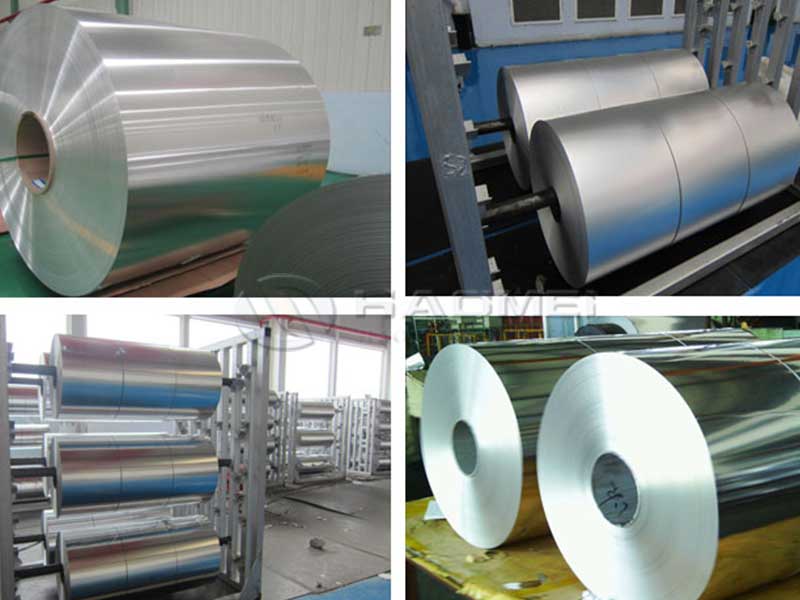Copper clad aluminum conductor
1. Mechanical characteristics
The strength and elongation of the pure copper conductor are larger than that of the copper-clad aluminum conductor, which means that the pure copper wire is better than the copper-clad aluminum wire in terms of mechanical properties. From the perspective of cable design, pure copper conductors have the advantage of better mechanical strength than copper-clad aluminum conductors, which are not necessarily required in the actual application process. Copper clad aluminum conductor is much lighter than pure copper, so the overall weight of copper clad aluminum conductor is lighter than pure copper conductor cable, which will bring convenience to cable transportation and cable erection. In addition, copper-clad aluminum is a little softer than pure copper, and cables produced with copper-clad aluminum conductors are a little better than pure copper cables in terms of flexibility.
2. Electrical performance
Because the conductivity of aluminum is worse than that of copper, the DC resistance of copper clad aluminum conductor is larger than that of pure copper conductor. Whether this affects mainly depends on whether the cable will be used for power supply, such as providing power to the amplifier, if it is used for power supply. , Copper-clad aluminum conductors will cause additional power consumption and voltage drop. When the frequency exceeds 5MHz, there is no obvious difference in the AC resistance attenuation under these two different conductors. Of course, this is mainly due to the skin effect of high-frequency current. The higher the frequency, the closer the current flows to the surface of the conductor. The surface of the copper-clad aluminum conductor is actually pure copper. When the frequency is high, the entire current is plated. It flows in the copper material. In the case of 5MHz, the current flows in a thickness of about 0.025 mm near the surface, and the thickness of the copper layer of the copper-clad aluminum conductor is about twice this thickness. For coaxial cables, because the transmitted signal is above 5MHz, the transmission effect of copper-clad aluminum conductor and pure copper conductor is the same. The attenuation of the actual test cable can prove this point. Copper-clad aluminum is softer than pure copper conductors and is easy to straighten during the production process. Therefore, to a certain extent, it can be said that cables with copper-clad aluminum have better return loss indicators than cables with pure copper conductors.
3. Economy
Copper clad aluminum conductor is sold by weight, and pure copper conductor is also sold by weight. The price of copper clad aluminum conductor is more expensive than pure copper conductor of the same weight. However, the copper clad aluminum of the same weight is much longer than the pure copper conductor, and the cable is calculated according to the length. With the same weight, copper-clad aluminum wire is 2.5 times the length of pure copper wire, and the price is only a few hundred yuan per ton. Taken together, copper-clad aluminum is very advantageous. Because the copper-clad aluminum cable is relatively light, the transportation cost and installation cost of the cable will be reduced, which will bring a certain degree of convenience to the construction.
4. Easy to maintain
The use of copper-clad aluminum can reduce network failures and prevent network personnel from "cutting the core in winter and cutting the skin in summer" (aluminum strip longitudinal packaging or aluminum tube products) during maintenance. Due to the large difference in thermal expansion coefficient between the copper inner conductor and the aluminum outer conductor of the cable, in the hot summer, the aluminum outer conductor stretches greatly, and the copper inner conductor is relatively retracted, and cannot fully contact the elastic contact piece in the F header; in severe cold In winter, the aluminum outer conductor shrinks greatly, causing the shielding layer to fall off. When the coaxial cable uses a copper-clad aluminum inner conductor, the difference in thermal expansion coefficient between it and the aluminum outer conductor is small. When the temperature changes, the cable core-pulling failure is greatly reduced, which improves the transmission quality of the network.

Aluminium Sheets
View Details
Aluminium Coils
View Details
Aluminium Foils
View Details
Aluminium Strips
View Details
Aluminium Circles
View Details
Coated Aluminium
View Details
Mirror Aluminum
View Details
Stucco Embossed Aluminum
View DetailsCopper
- Cu Clad Al washer Copper alum...
- Ultra-thick copper-aluminum bi...
- Copper-aluminum bimatallic pla...
- Copper clad plate sheet manufa...
- Characteristics of titanium co...
- Copper clad aluminum flat wire
- bimetallic strip aluminum and...
- copper washer on aluminum
- Copper clad aluminum strip for...
- copper aluminum bimetal washer
- Single sided copper aluminum e...
- Energy-saving copper - aluminu...
- Copper clad aluminum CCA Bi-me...
- copper-alu-copper clad tree-la...
- Copper clad aluminum bar rod
- copper clad aluminium foil
- Copper clad aluminum wire busb...
- copper coated aluminum busbar
- Copper aluminum roll bonded cl...
- Copper clad aluminum wire’s ap...